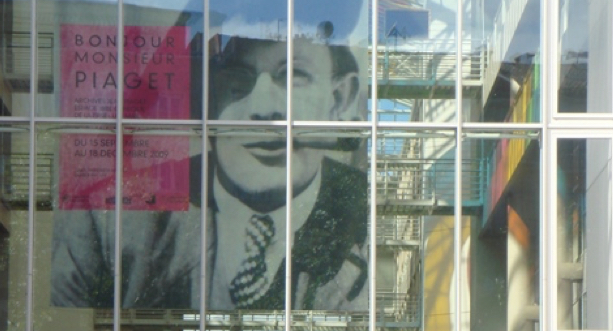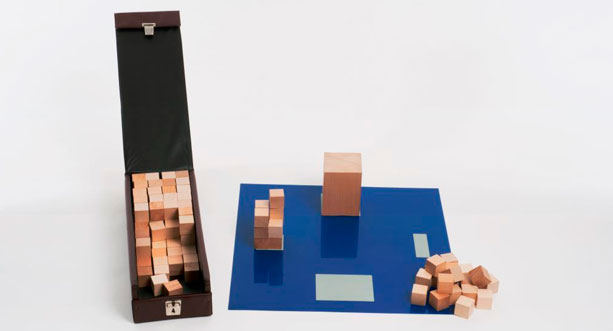“The deepest tendency of all human activity is the movement towards equilibrium.”
Jean Piaget carrying Laurent, his son, c. 1932
From 1913 to 1980, Jean Piaget slowly built a work to answer the questions of development of knowledge and the emergence of novelty. Here is a brief tour through his legacy in a few privileged moments.
Travelling through the work
Recherche
This autobiographical novel presents his character, Sébastien, facing different conflicts: war, the crisis of values, the problematic relationship between faith and science. In tracing the reflections of mainly French thinkers, Piaget places at the centre the need for balance and, in this way, traces some fundamental lines of his thought.
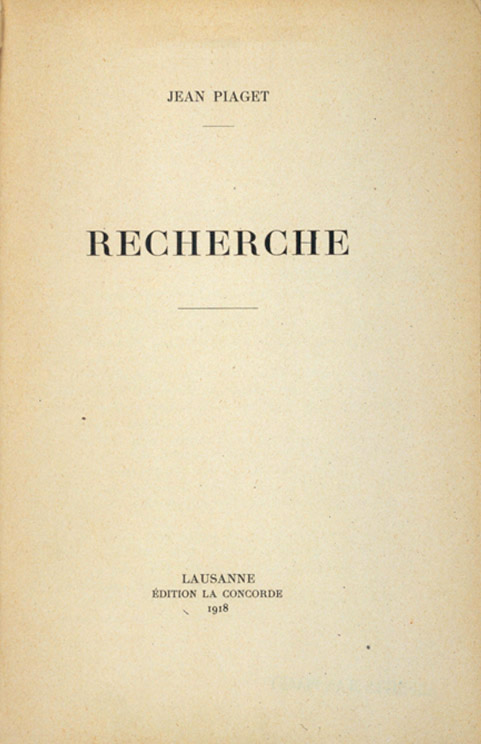
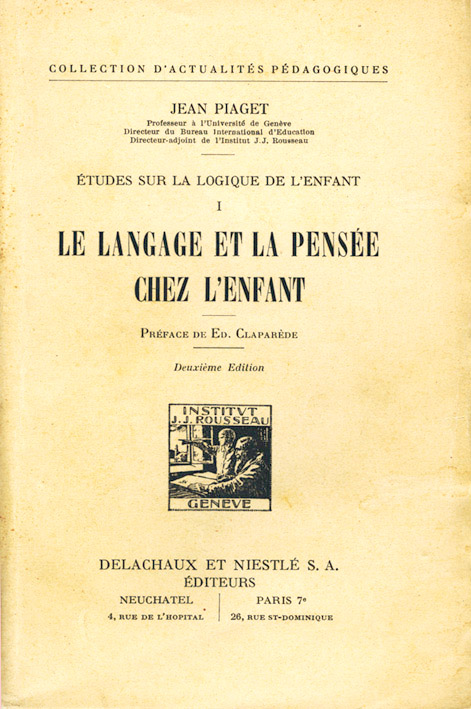
Le langage et la pensée chez l’enfant
Avec la collab. de F. Berguer, H. de Meyenburg, A. Deslex, G. Guex, A. Leuzinger-Schuler, V. Piaget et L. Veihl.
Piaget’s first book on psychology, in which he and his collaborators use the clinical method and other strategies to obtain data. Showing the strong relation between language and the mechanisms of thought—egocentrism and syncretism—it illustrates the specificity of child logic in comparison with adult logic. The book is expanded with Judgment and Reasoning in the Child (1924), in collaboration with F. Berguer, E. Cartalis, S. Escher, M. Fiaux, L. Gonet, L. Hahnloser, U. Hanhart, O. Matthes, S. Perret and M. Roud.
La représentation du monde
chez l’enfant
Avec la collaboration de A. Bodourian, G. Guex, R. Hepner, H. Krafft, E. Margairaz, S. Perret, V. Piaget, M. Rodrigo, M. Roud, N. Svetlova et le Dr Versteeg.
A book that presents for the first time the clinical method in detail. Piaget analyses the explanations children give to certain phenomena (such as birth, matter, night, rain and other natural phenomena) as well as the various kinds of indifferentiations specific to children up to the age of 7 (sleep-reality, out-in, moral and physical need, sign and thing, etc.). In this work, child psyche is characterized by realism, artificialism and animism.

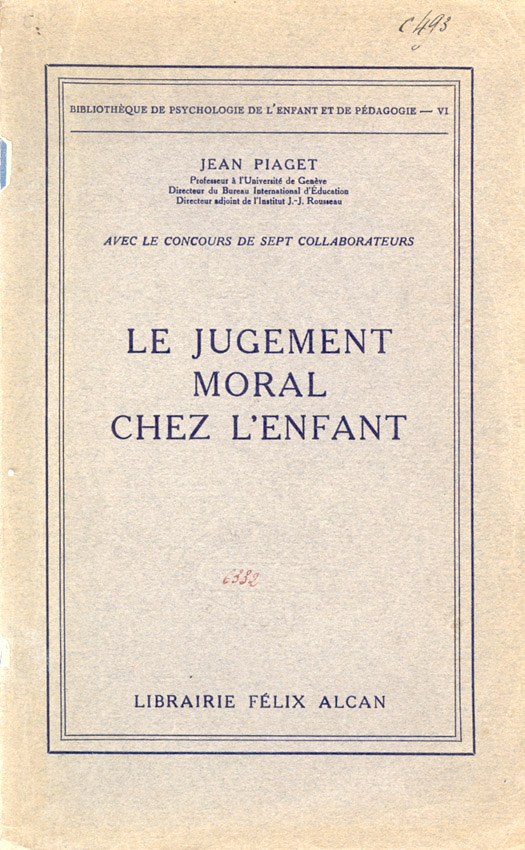
Le jugement moral chez l’enfant
Avec la collab. de N. Baechler, A.-M. Feldweg, M. Lambercier, L. Martinez-Mont, N. Maso, V. Piaget et M. Rambert.
In this work he shows that the construction of norms and rules depends on social cooperation that releases the child from egocentrism. Moral judgement presents a new model of explanation based on the distinction between two types of respect, mutual respect (between peers, through cooperation) and unilateral respect (involving coercion).
La naissance de l’intelligence
chez l’enfant
Celebrated by Henri Piéron as a “milestone” in the history of psychology, this book is innovative both in its methodology of observation of its own children—in collaboration with Valentine Piaget—and in its use of a biologically inspired, but not reductionist, model of knowledge of the baby. Piaget distinguishes between the functional aspect (interaction between the subject and the object through regulated adaptation) and the structural aspect (organization of action in schemas that are generalized and whose assimilatory perimeter increases as the interaction progresses). In this way, he offers the first synthetic model of the development of intelligence from birth to the appearance of language.


La construction du réel chez l’enfant
This second volume of his trilogy on the cognitive development of babies, is based on the same collection of data obtained with his wife Valentine, from the observation of their children. Piaget follows step by step the genesis of the notion of object, cause, time and space. The book highlights the existence of a specific and systematic sensory-motor knowledge that precedes language and constitutes the schematic basis on which concepts and notions are subsequently built.
Le développement des quantités chez l’enfant
Avec B. Inhelder
Avec la collaboration de N. Gruner, M. Ingold-Favroz-Coune, O. Kiazim et T. Strauss.
This work opens the period known as “genetic structuralism”, in which the fundamental categories of thought are studied, in particular, number, time and space. This is the main work on the genesis of conservation that extends the problem of functional invariants and structural discontinuities, discussed in The origins of intelligence in children. Piaget and Inhelder demonstrate that the conservation of physical quantities is the result of the construction of logical structures during development.
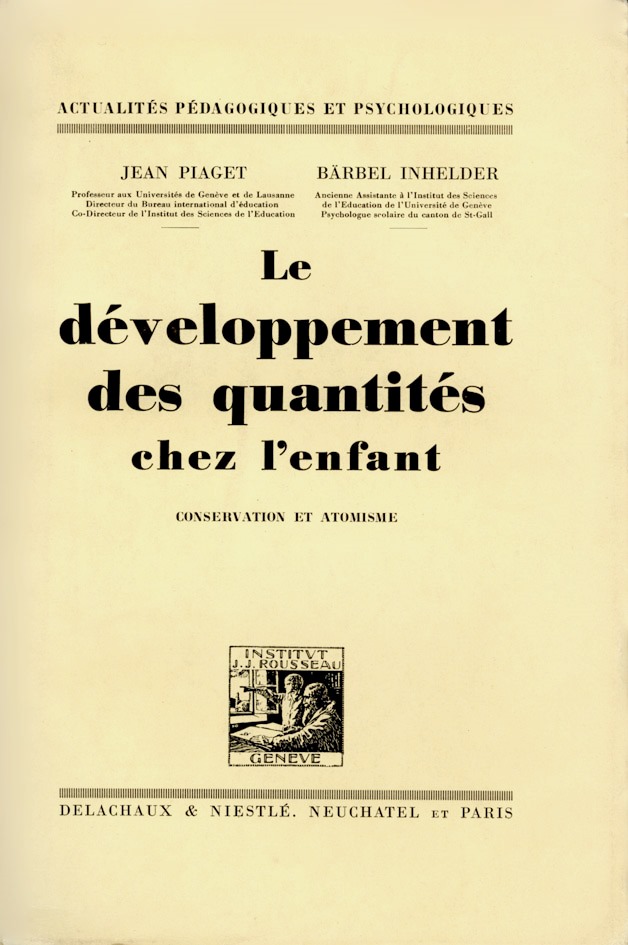
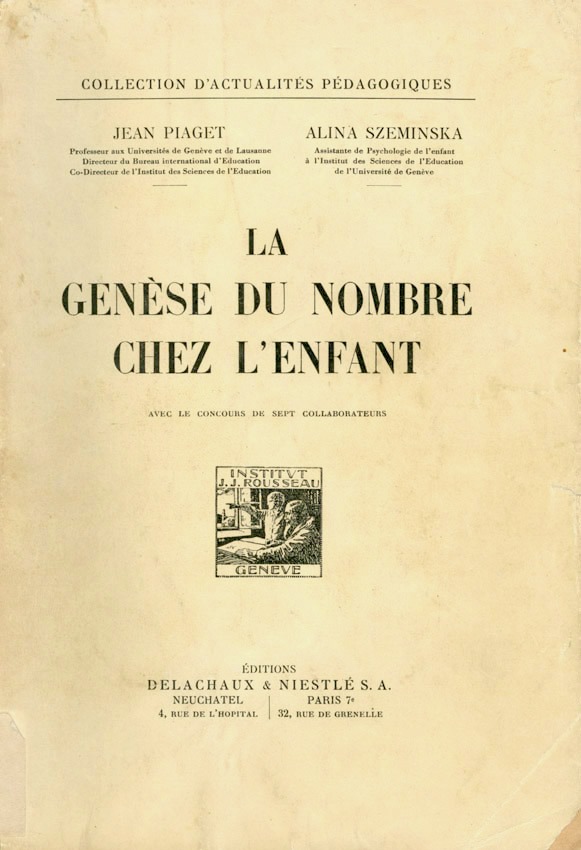
La genèse du nombre
chez l’enfant
Avec A. Szeminska
Avec la collaboration de Z. Glikin, J. Jaen, T. Katzaroff-Eynard, R. Mehmed-Semin, Z. Trampidis, E. Vauthier et F. Zakon.
This book is the culmination of a research program on the genesis of number, started with Alina Szemińska in the early 1930s. Through a series of simple and ingenious experimental devices, Piaget and Szemińska show that the notion of number results from the synthesis of classification and serialization and depends on a reversible structure.
Classes, relations et nombres : essai sur les groupements de la logistique et sur la réversibilité de la pensée
In this essay, Piaget addresses the question of the foundations of mathematics from a perspective that is opposed to the theses of logical empiricism and symbolic logic. He shows that the structure of a group is based on the reversibility of thought and that its construction can be described as a result of the development of an elementary logical unit, the grouping.
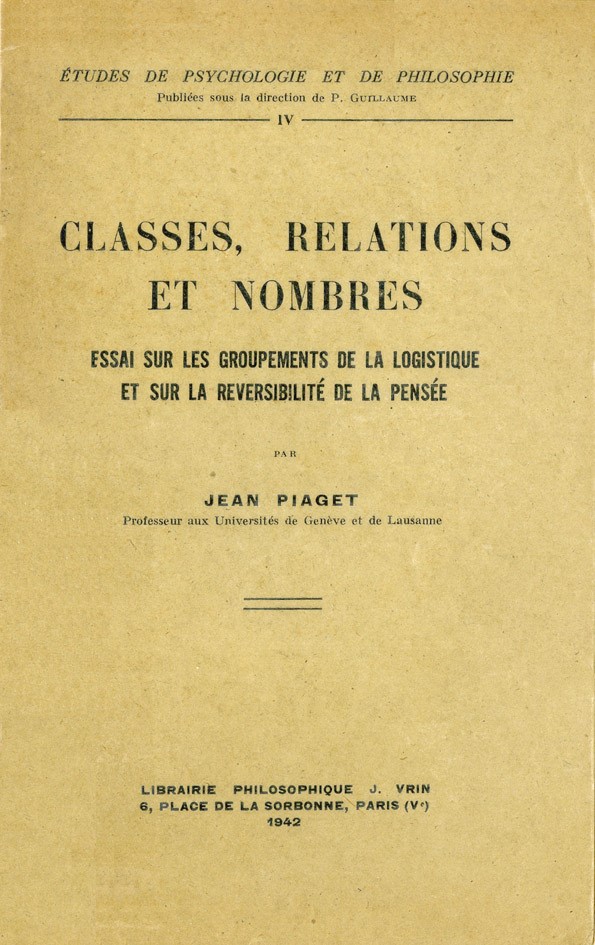
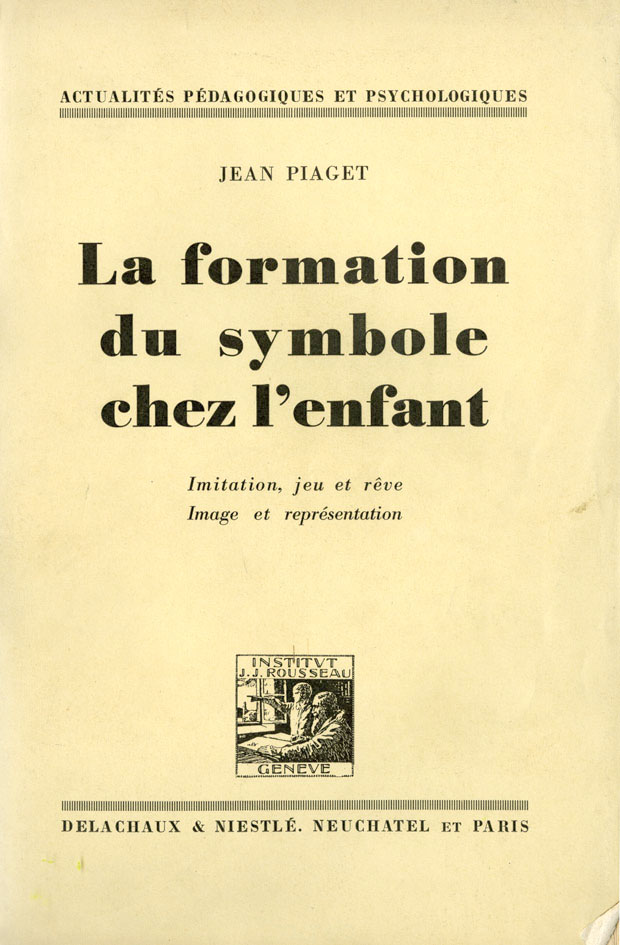
La formation du symbole chez l’enfant : imitation, jeu et rêve, image et représentation
As the last part of the baby trilogy, this book uses the model of adaptation to explain the emergence of symbolic function, responsible for representation, based on adaptive interaction and sensory-motor schematism. In particular, Piaget proposes a model for the genesis of the symbolic function that is different from that of psychoanalysis.
Le développement de la notion de temps chez l’enfant
Avec la collaboration de E. Bussmann, E. Meyer, V. Richli et M. van Remoortel.
A systematic research on different dimensions of time: order of events, time of action, notions of simultaneity, duration and succession, lived time, etc. Piaget shows here the dependence of the notion of time on the reversible structures of thought.
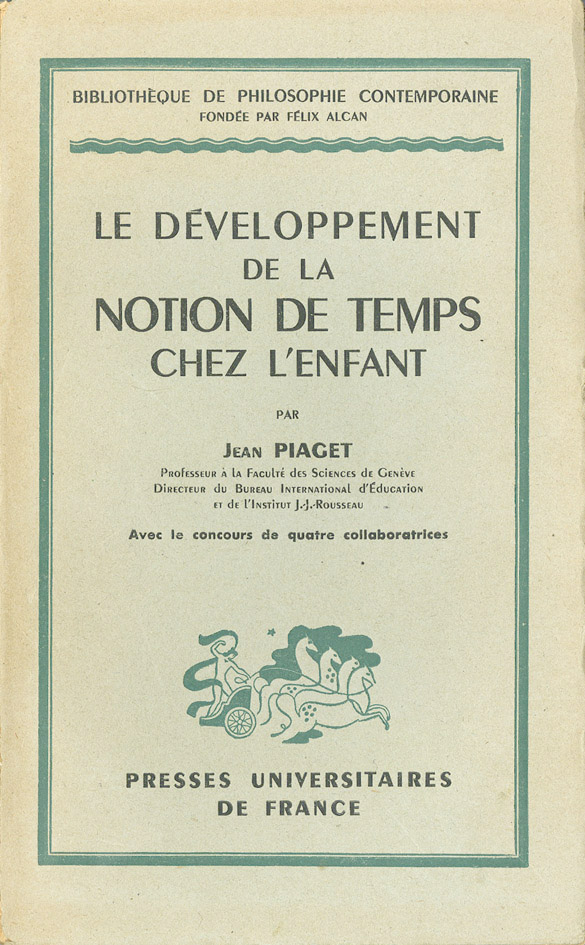

La psychologie de l’intelligence
In this book, Piaget combines the results of almost three decades of research into the development of intelligence based on a functional, structural and genetic model. He organizes development in stages, from birth to adolescence, and integrates adaptive functioning with the results of the structural study of notions, discussing, moreover, the relationships between cognitive and affective development.
La représentation de l’espace
chez l’enfant
Avec B. Inhelder
Avec la collaboration de H. Aebli, G. Ascoli, B. Begert Demetriades, E. Bussmann, E. de Jonhg, E. de Planta, M. Denis-Prinzhorn, U. Galusser, M. Gantenbein, J. Halperin-Goetschel, I. Kiss, L. Laurent, G. Lewinnek, E. Meyer, A. Morf, J. Nicolas, C. Renard, M. Roth, E. Sontag et S. Taponier.
This research has been conducted since the mid-1930s and has included thousands of interviews with children. The book shows that the notion of space is a reconstruction of the preceding schematic elaborations, resulting from motor and perceptual coordination.

Introduction à l’épistémologie génétique
Vol. I. La pensée mathématique
Vol. II. La pensée physique
Vol. III. La pensée biologique, la pensée psychologique et la pensée sociologique
The three volumes of the Introduction to Genetic Epistemology lay the foundations of this new discipline, which links the psychogenesis of knowledge with the historical development of sciences. The validity of knowledge depends on its modes of construction, so Piaget assumes a continuity between the processes of construction of knowledge in children and in the sciences. The historical-critical, sociogenetic and psychogenetic methods make possible to understand the processes that are involved in the construction of notions and tools for knowledge.


La genèse de l’idée de hasard
chez l’enfant
Avec B. Inhelder
Avec la collaboration de G. Ascoli, M. Denis-Prinzhorn, A. Morf, E. Sontag, M. van Remoortel et V. Bang.
From 1913 to 1980, Jean Piaget slowly built a work to answer the questions of development of knowledge and the emergence of novelty. Here is a brief tour through his legacy in a few privileged moments.
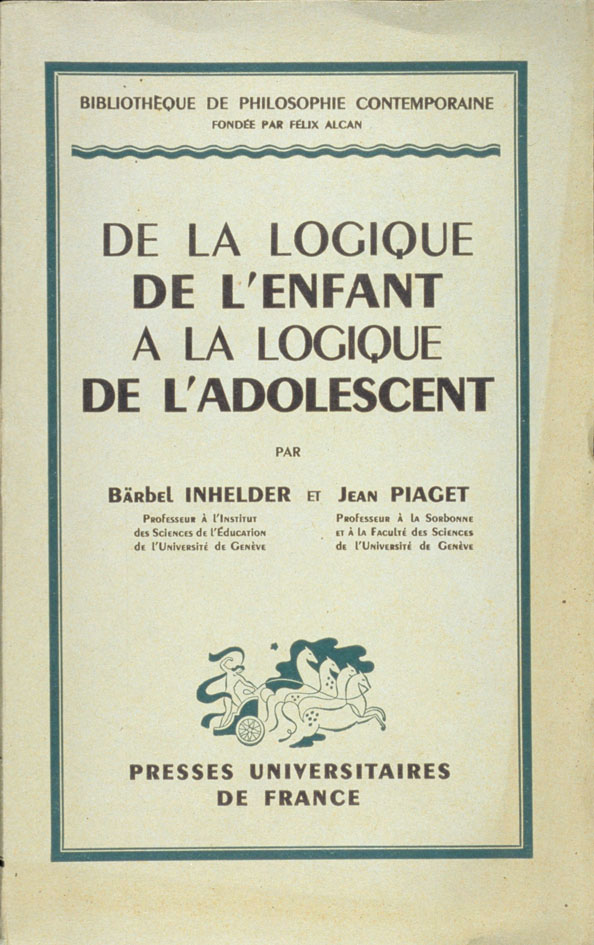
De la logique de l’enfant à la logique de l’adolescent
B. Inhelder et J. Piaget
Avec la collaboration de H. Aebli, J. Bal, M. Denis-Prinzhorn, M. Gantenbein, M. Golay-Barraud, C. Lévy, F. Maire, F. Matthieu, A. Morf, L. Müller, J. Nicolas, G. Noelting, H. Olivieri, F. Pitsou, B. Reymond-Rivier, J. Rutschmann, S. Taponier, A.-G. Tissot, T. Vergopoulo, V. Bang, A.-M. Weil et M. Wikstrôm.
The result of Inhelder’s research with adolescents who are confronted with experimental devices that they try to understand and the INRC logic model of Piaget, this book takes up the functionalist perspective present in the trilogy about the baby, benefiting from the achievements of the period of genetic structuralism. It examines how the subjects acquire and use their instruments of knowledge, examining the “methods of discovery and experimental trials characteristic of the adolescent” (p. 2).
Épistémologie génétique et recherche psychologique
Avec W.E. Beth et W. Mays
This volume launches the series Studies in Genetic Epistemology published by PUF, which includes more than 35 volumes up to 1980, all of them resulting from the scientific and interdisciplinary meetings of the International Center for Genetic Epistemology. Starting a new intellectual adventure, the book offers three points of view on how to approach the new epistemology in its relationship with different psychologies and with logical positivism.

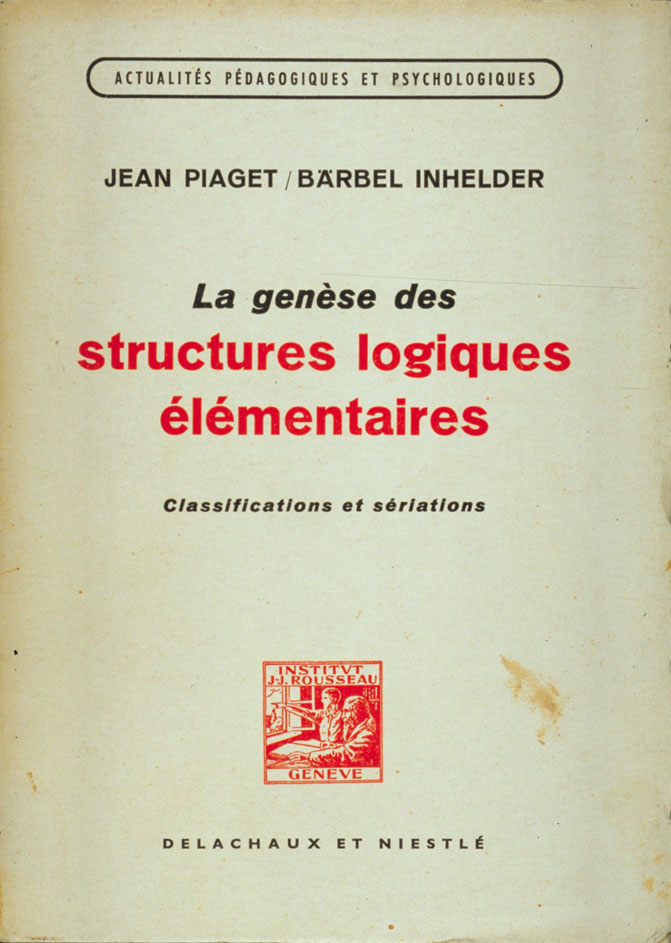
La genèse des structures logiques élémentaires
Avec B. Inhelder
Avec la collaboration d’A. Etienne, Y. Feller, H. Fischer, F. Frank, J. Maroun, B. Matalon, F. Matthieu, E. McNear, A. Morf, H. Niedorf, G. Noelting, M.-C. Reymond, B. Reymond-Rivier, W. Sears, E. Siotis, S. Taponier, V. Bang et M.-F. Zanetta.
The book returns to certain open questions at the beginning of the structuralist period, related to the formation of classes, the processes of inclusion, the operations of logical intersection or multiplication, and of serializations. A material composed of geometric forms, collections and concrete objects is used to create simple and effective experimental devices that show the dependence of logical structures on groupings identified by Piaget.

Apprentissage et connaissance
Avec P. Gréco
This seventh volume of the Studies in Genetic Epistemology addresses the problem of compatibilities and incompatibilities between theories of learning and Piaget’s constructivist theory of knowledge. This problem will be discussed at the Center for Epistemology for some years.
Les mécanismes perceptifs : modèles probabilistes, analyse génétique, relations avec l’intelligence
In 1941, with the collaboration of Marc Lambercier, Piaget launched an experimental psychology program that lasted two decades. The challenge was to demonstrate that perception also depends on development and that it is based in part on the organization of action. With about fifty articles written by Piaget and more than thirty collaborators, this “Research on the Development of Perceptions”, published between 1942 and 1960 in the Archives of Psychology, led to the book The mechanisms of perception, in 1961.

Traité de psychologie expérimentale
9 volumes, sous la dir. de P. Fraisse et de J. Piaget
After World War II, Piaget intensified its international collaborations, especially with the French-speaking psychological communities in France, Switzerland and Belgium. In this context, it was under the initiative of his friend Paul Fraisse that the French-language Scientific Psychology Association was founded in 1951, under the patronage of the Belgian Albert Michotte, the Frenchman Henri Piéron and Piaget. The work on perception in this series placed the authors among the key references in experimental psychology. This new project, born in the early 1960s and contributed to the training of generations of psychologists until the 1990s.
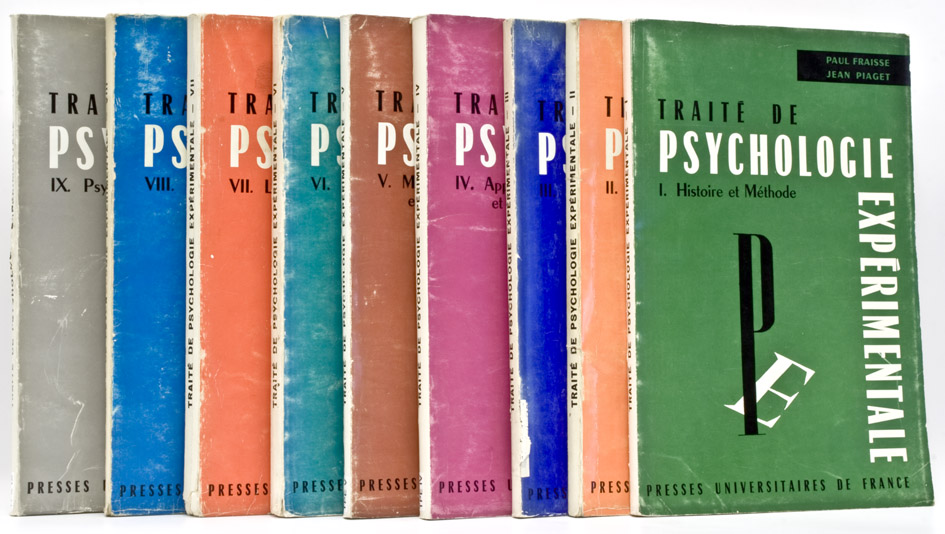
Sagesses et illusions de la philosophie
In this volume, Piaget reviews his early passions and presents his vision of philosophy. In particular, he argues that it allows problems to be defined and appropriate questions to be asked, but, given its discursive and non-experimental methodology, it can only offer tentative answers. On the other hand, science and genetic epistemology provide validated answers to these same problems through experimentation and logical-mathematical modelling. The book gave rise to a public debate between Piaget, psychologists Paul Fraisse and Yves Galifret and philosophers Francis Jeanson and Paul Ricoeur.


Études sociologiques
This publication is a collection of sociological articles published by Piaget between 1941 and 1950. It discusses a structuralist model for sociology, studies the relationship between law and morality, and analyzes the nature of sociological explanation. The third edition, from 1977, contains twice as many articles, published in the period between 1928 and 1963.
L’image mentale chez l’enfant
Avec B. Inhelder
Avec la collaboration de M. Aboudaram, M. Anthonioz, P. Antonini, T. Bang, J. Bliss, M. Boehm, M. Bovet, M. Chollet-Levret, R. Droz, C. Emery-Menthonnex, A. Etienne, C. Fot, F. Frank, A. Henriques-Christofides, B. Matalon, P. Mounoud, D. Nicollier, H. Niedorf, J. Pascual-Leone, F. Paternotte-Agoston, L. Pecsi, L.-P. Poirier, A. Politi, E. Schmid-Kitsikis, A. Sella, S. Taponier, K. Tyborowska, V. Bang et G. Voyat.
Continuing with the subject of image and representation, opened in Play, dreams and imitation in childhood, this work launches a new period that marks a distance from the structural one. In the preface, Piaget does not hesitate to denounce the “fashions” of psychology in an attempt to distance himself from them by tackling a subject that was almost taboo in the 1960s. Using a less clinical methodology that is closer to that of experimental psychology, the book systematically addresses the question of the relationship between mental image and the development of intelligence, between the “figurative” and “operative” aspects of cognitive functions.
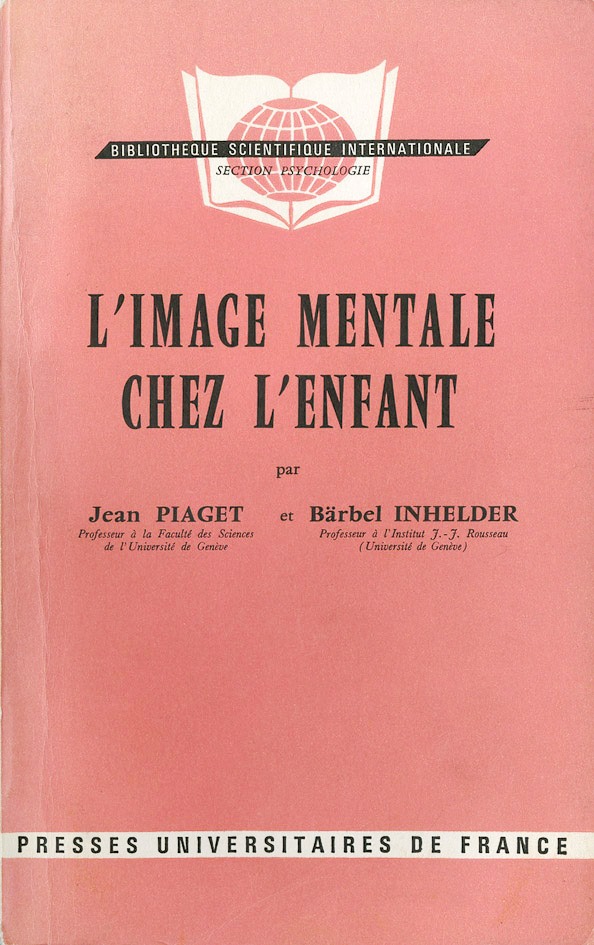
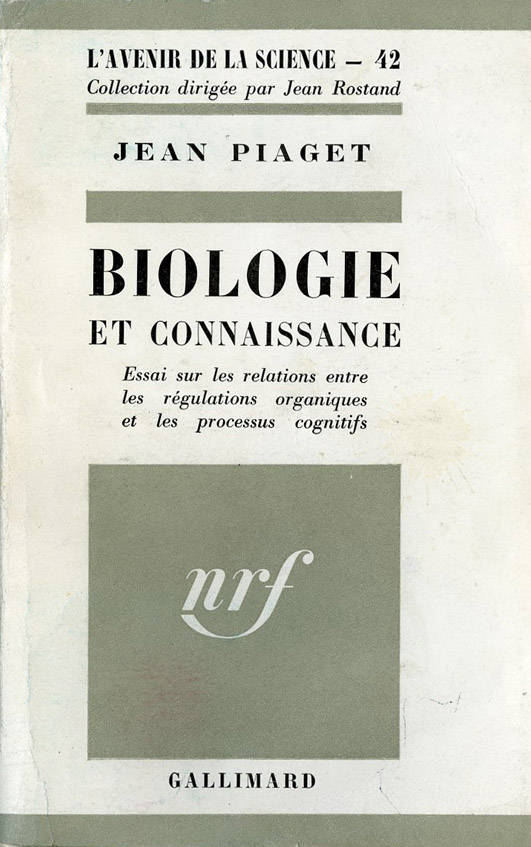
Biologie et connaissance : essai sur les relations entre les régulations organiques et les processus cognitifs
An innovative and provocative work. Firstly, because of the approach that aims to link the biological programmes of the constitution of the genome with the subject’s own cognitive processes. Secondly, because it was published at the height of neo-Darwinian biology, from an opposite position that shows the possibility of the phenomena of epigenesis and transgenesis. Since the 2000s these topics have been consolidated as specific fields of biological research.
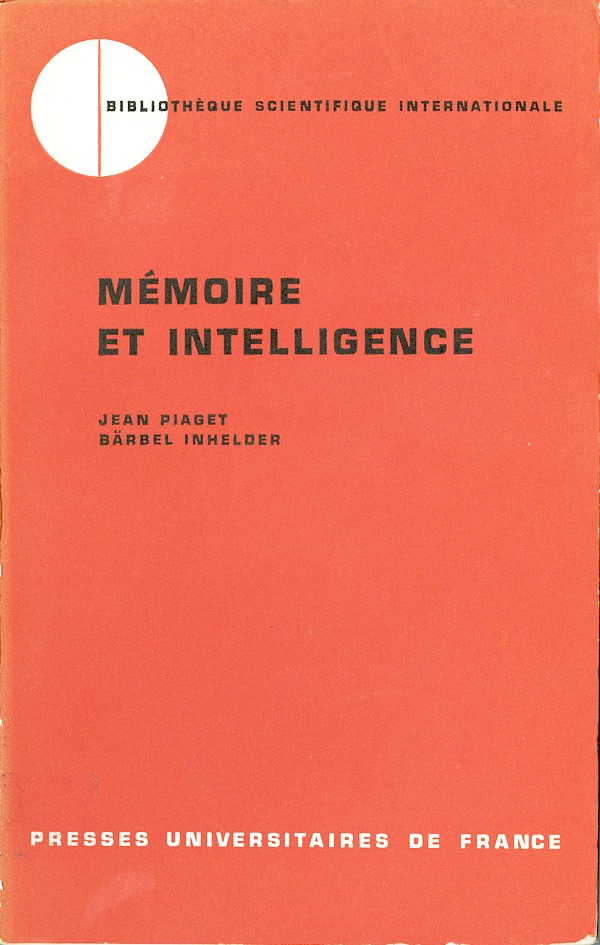
Mémoire et intelligence
Avec B. Inhelder
Avec la collaboration de T. Bang, A. Bauer, J. Bliss, C. Challande, M. Chollet-Levret, J. Delcourt, M.-J. Delcourt, M. Depotex, C. Fot, A. Henriques-Christofides, L. Luka, R. Maier, O. Maratos, P. Mounoud, S. Opper, P. Petrogalli, E. Schmid-Kitsikis, G. Voyat et C. Widmer.
This work continues the exploration of cognitive functions, initiated in the book Mental imagery in the child. It studies the memories of events of a logical, causal and spatial nature, thus highlighting the relationships between memory and the development of concepts.
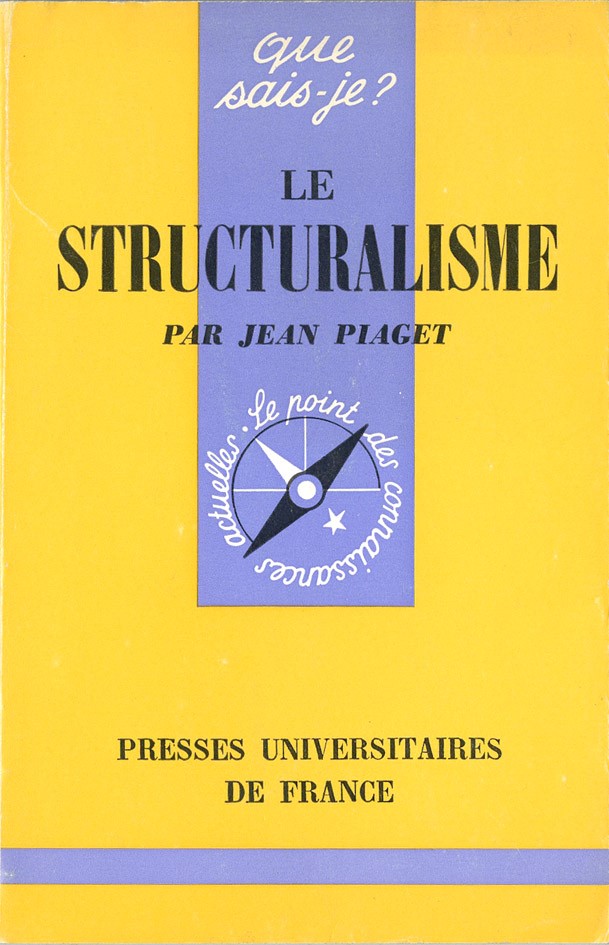
Le structuralisme
Continuing with the book series Que sais-je? inaugurated by PUF publishing house with the publication of The Psychology of the Child in 1966, this book synthesizes the different trends and contributions of structuralism to scientific research, both in the field of human sciences and natural sciences. Written at the height of structuralism, Piaget defends genetic constructivism while confronting it with the formalist structuralism of Lévi-Strauss.
Psychologie et pédagogie
Since 1964, Denoël Gonthier has published thematic collections of articles written by Piaget. Although he has often taken a critical stance on pedagogical issues, this collection shows that, as director of the International Bureau of Education and as a psychologist of intelligence, Piaget has developed original concepts related to teaching, pedagogy and, in general, to the ways in which knowledge is transmitted.
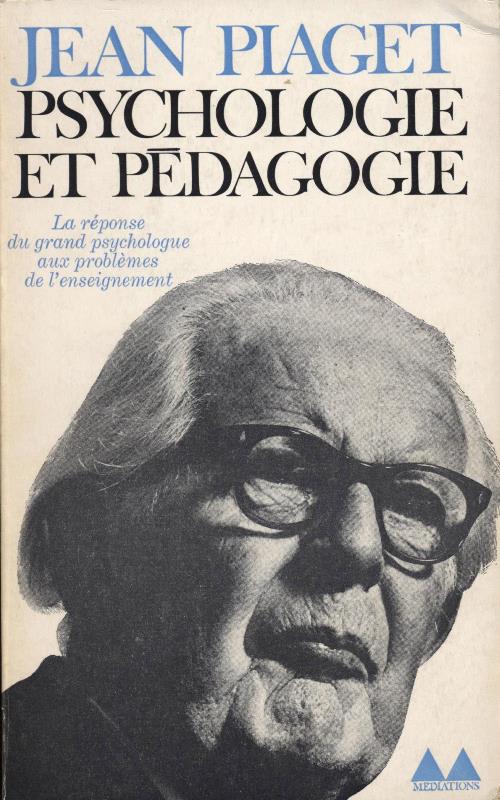
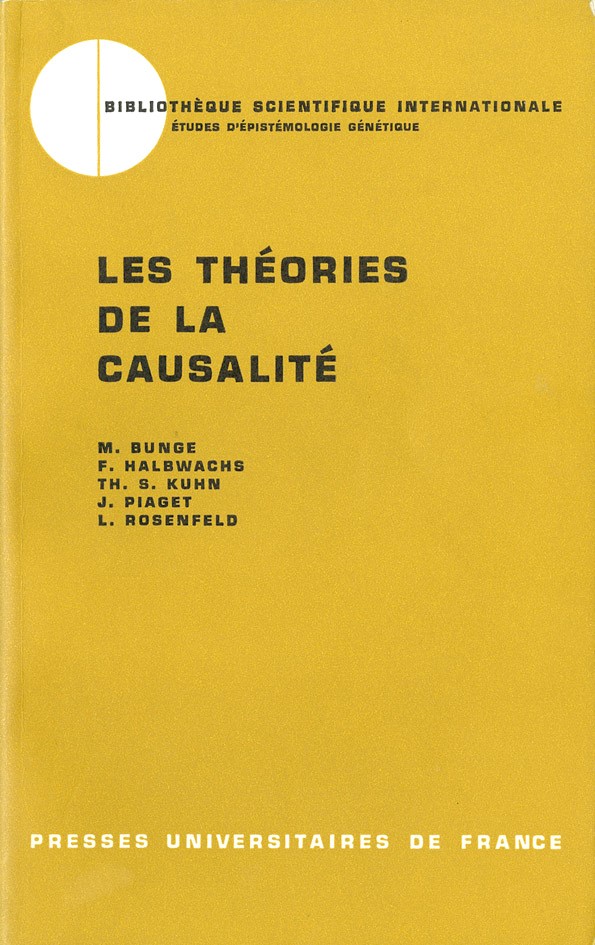
Les théories de la causalité
Avec M. Bunge, F. Halbwachs, T.S. Kuhn, L. Rosenfeld
Like the entire series of Studies in Genetic Epistemology, of which this is volume 25, it presents the results of the discussions that took place at the International Center for Genetic Epistemology. Decidedly pluralistic, this work illustrates the confrontation of the theses of five epistemologists and historians of science on the problem of causality.
La prise de conscience
Avec la collaboration de A. Blanchet, J.-P. Bronckart, N. Burdet, A. Cattin, C. Dami, O. de Marcellus, M. Fluckiger, M. Flückiger-Geneux, C. Gilliéron, A. Henriques-Christofides, D. Liambey, A. Munari, M. Robert et A.-M. Zutter.
The result of research carried out at the International Center for Genetic Epistemology, the book addresses this specific behavior that is the grasp of consciousness, under the hypothesis that it is a complex process of reconstruction and not a simple projection or internal enlightenment. It shows how the success of certain simple actions produces feedback effects that are of the order of a true construction of integrated levels that allow the grasp of consciousness.
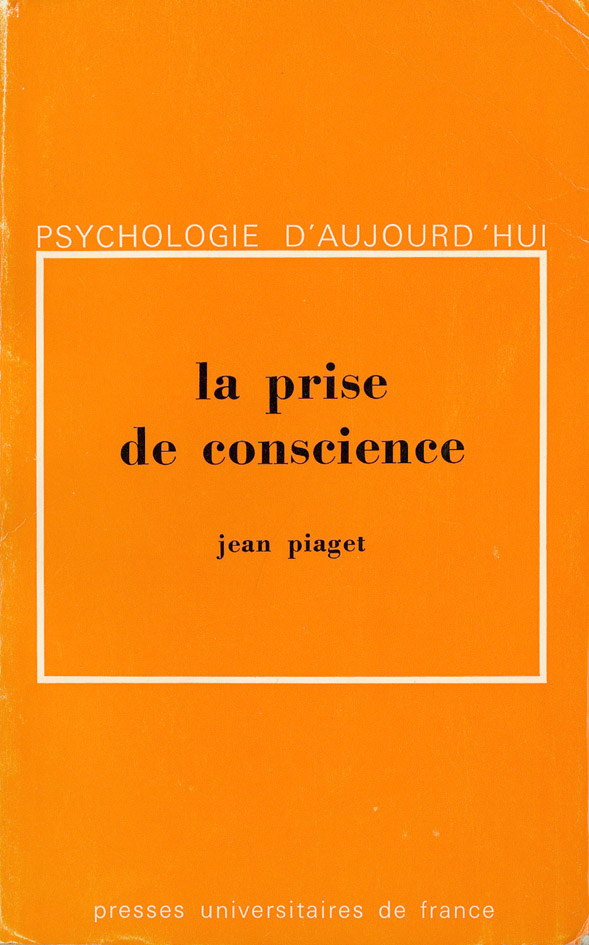
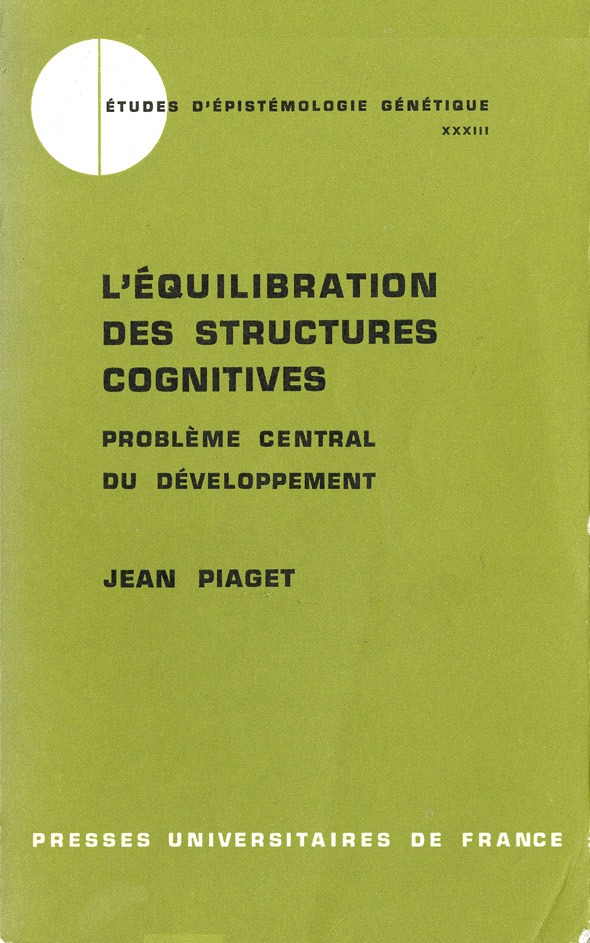
L’équilibration des structures cognitives : problème central du développement
Considered by Piaget as the culmination of his work, this 33rd volume of Studies in Genetic Epistemology refers to many previous works and in particular to the first model of equilibration, published in 1957 in Logic and Equilibrium. The book shows how the mechanism of equilibrium operates to compensate for the disequilibria caused by incomplete coordinations between the observables of the subject and the observables of the objects. This model allows us to explain the transformations of knowledge and the emergence of new constructions.
Les formes élémentaires de la dialectique
En collaboration avec E. Ackermann, L. Banks, I. Berthoud, A. Blanchet, A. Boder, M. Bovet, C. Coll, D. de Caprona, S. Dionnet, A. Henriques-Christofides, H. Kilcher, D. Maurice, C. Monnier, K. Noschis, E. Rappe du Cher, A. Ritter, M. Sakellaropoulo, A. Wells, M. Zinder et R. Zubel.
Extending the model of equilibration and based on the experimental research carried out at the International Centre for Genetic Epistemology, this book addresses the problem of the construction of novelties by showing that dialectical processes are present at all levels. It goes beyond the classical philosophical questions about dialectics by conceptualizing it as a construction of “new interdependencies between meanings” (p. 12). This study provides a constructivist solution to the problem of the directionality of the process of creating forms that are only necessary once they are constituted.

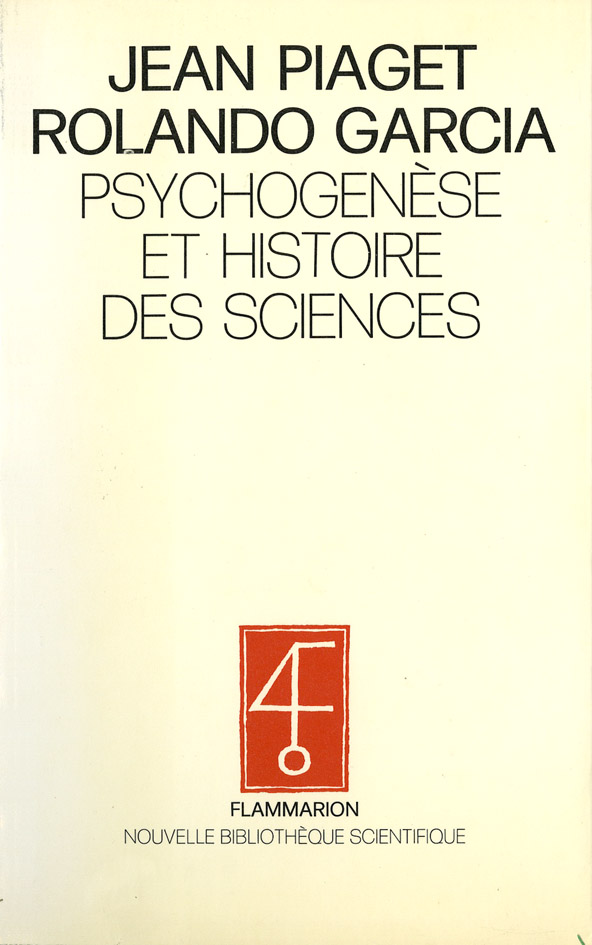
Psychogenèse et histoire des sciences
Avec R. García
This volume brings together the ideas of a physicist and historian of science with those of an epistemologist and psychologist, to show how the encounter between the study of the development of notions in children, on the one hand, and the history of science, on the other, is an opportunity to find answers to the classic problem of the origin of knowledge.


